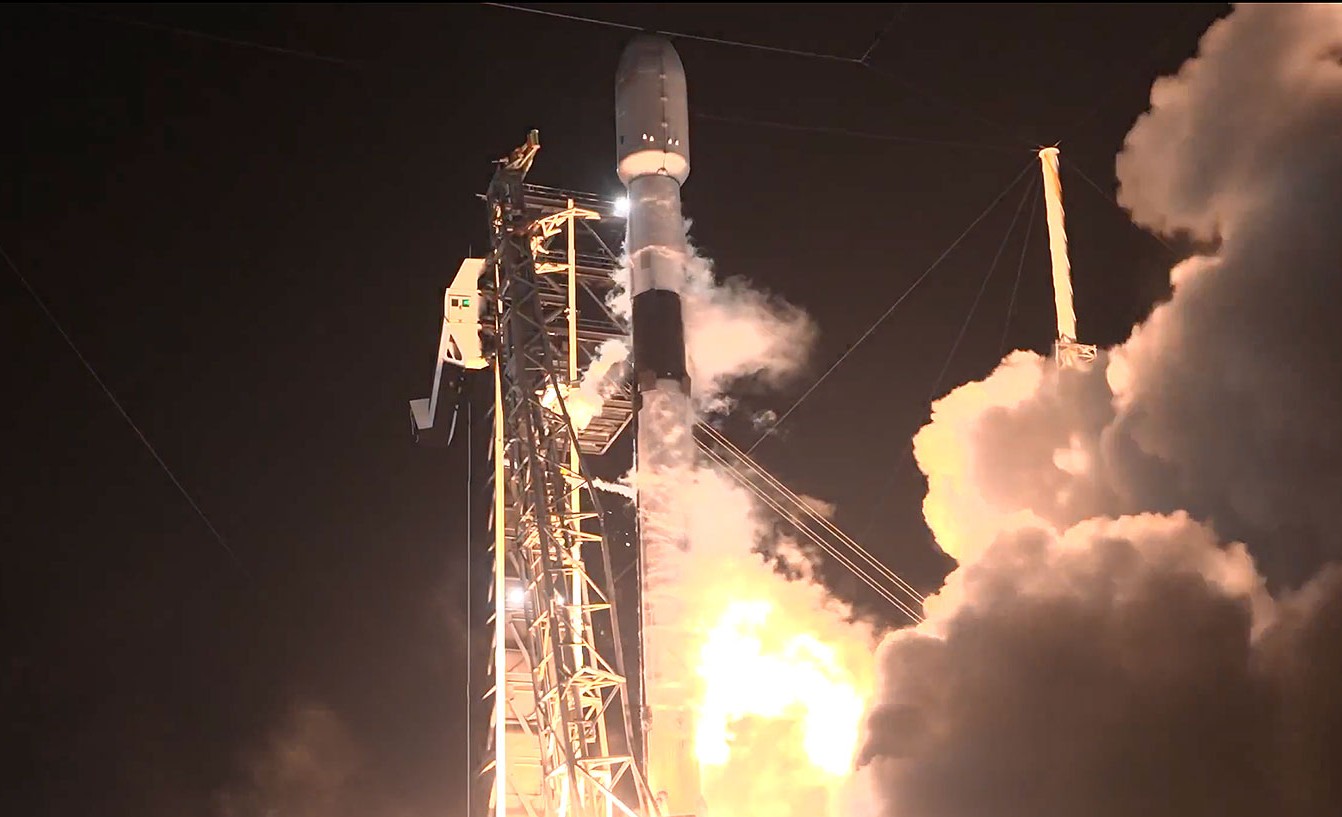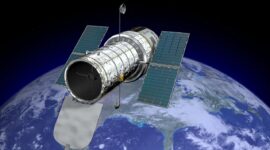Cape Canaveral, Florida – July 13, 2025 – In a mission shrouded in secrecy, SpaceX launched a mysterious government satellite into space on Sunday, July 13, 2025, at 10:42 p.m. EDT (0242 UTC on July 14). The Falcon 9 rocket lifted off from Space Launch Complex 40 (SLC-40) at Cape Canaveral Space Force Station, carrying an undisclosed payload for an unnamed U.S. government agency, widely speculated to be a classified intelligence or communications satellite. The mission, designated *USSF-62*, marked another milestone in SpaceX’s expanding role in national security space launches.
The Launch and Mission Profile
The Falcon 9 booster, designated B1081 in SpaceX’s fleet, soared into the night sky under clear weather conditions, its nine Merlin engines generating 1.7 million pounds of thrust. Approximately two and a half minutes into the flight, the first stage separated and began its descent back to Earth, successfully landing on the droneship Just Read the Instructions stationed in the Atlantic Ocean. This marked the booster’s sixth successful launch and landing, demonstrating SpaceX’s continued reusability success.
Meanwhile, the second stage continued its ascent, deploying the classified satellite into a geostationary transfer orbit (GTO) roughly 32 minutes after liftoff. The exact orbital parameters and final destination of the payload remain undisclosed, in line with standard procedures for classified missions. However, analysts suggest the satellite likely belongs to the National Reconnaissance Office (NRO) or the U.S. Space Force, given the mission’s designation and trajectory.
Secrecy Surrounding the Payload
As with previous classified missions, details about the satellite’s purpose, capabilities, and even its official name were withheld from the public. The U.S. Space Force confirmed the launch’s success in a brief statement but provided no further information, citing operational security. Industry experts speculate that the payload could be an advanced signals intelligence (SIGINT) satellite, a next-generation missile warning spacecraft, or a secure communications relay for military operations.
Jonathan McDowell, an astrophysicist and spaceflight tracker at the Harvard-Smithsonian Center for Astrophysics, noted that the GTO insertion suggests the satellite will eventually maneuver into a geostationary orbit, approximately 22,236 miles (35,786 km) above Earth. “This is typical for military communications or surveillance satellites that need persistent coverage over specific regions,” he said.
SpaceX’s Growing Role in National Security Launches
The *USSF-62* mission underscores SpaceX’s dominance in the national security launch sector, having secured a significant share of Pentagon and intelligence community contracts through its work under the National Security Space Launch (NSSL) program. Since being certified for military launches in 2015, SpaceX has competed aggressively with United Launch Alliance (ULA), offering cost-effective and reliable launch services.
This mission also highlights the increasing reliance on reusable rockets for sensitive government payloads. Just a few years ago, national security missions exclusively used expendable rockets due to concerns about the reliability of reused boosters. However, SpaceX has demonstrated that flight-proven boosters are just as reliable, if not more so, than new ones.
Geopolitical Implications
The launch comes amid heightened global tensions, with space becoming an increasingly contested domain. The U.S., China, and Russia have all accelerated their military space programs, deploying advanced satellites for surveillance, navigation, and communications. The secrecy surrounding *USSF-62* suggests it may play a role in maintaining U.S. strategic superiority in orbit.
“In an era where space dominance is critical, having secure, resilient satellites is non-negotiable,” said Todd Harrison, a defense expert at the Center for Strategic and International Studies (CSIS). “This launch is another step in ensuring the U.S. maintains its edge.”
What’s Next for SpaceX?
Following this mission, SpaceX is preparing for multiple high-profile launches, including the next Starship test flight and several Starlink deployments. The company continues to push the boundaries of spaceflight, with ambitions ranging from Mars colonization to rapid global internet coverage.
Meanwhile, the mystery satellite will undergo initial checks before maneuvering into its final orbit, where it will begin its classified operations—out of the public eye but playing a crucial role in national security.




